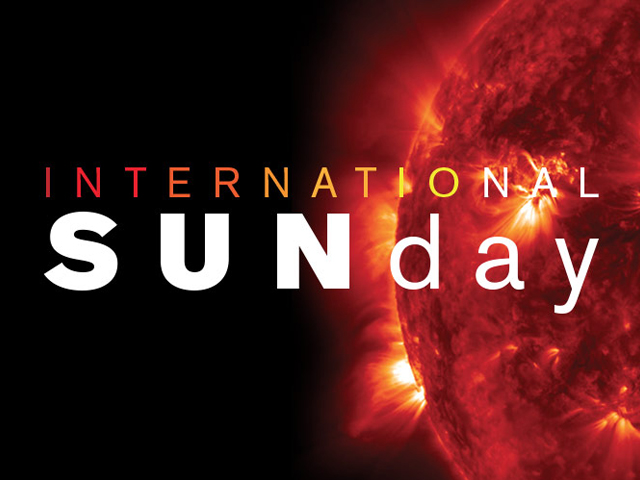See the Sun in a new light at Museum’s International SUNday event, June 18
For immediate release ‐ June 08, 2017
Contact: Jon Pishney, 919.707.8083. Images available upon request

RALEIGH, N.C. — Learn more about our amazing star, the Sun, when the North Carolina Museum of Natural Sciences hosts International SUNday on Sunday, June 18, 12:30 to 4 p.m. Safely view the Sun through solar telescopes, hear about unusual space weather and current solar research, and learn about the total solar eclipse happening in August. International SUNday is held annually on the Sunday nearest to the summer solstice, which is the day with the most hours of sunlight during the entire year, marking the beginning of summer in the Northern Hemisphere. The event is free.
Visitors can safely look at the Sun through the Museum’s special “Hydrogen-Alpha” telescope — which highlights fascinating surface features and solar storms — on the Rooftop Terrace of the Nature Research Center from 1 to 3:30 p.m. (weather permitting). Visitors can also attend the following talks in the Museum’s SECU Daily Planet Theater:
“Day to Night and Back Again: The Solar Eclipse of 2017” (12:30 p.m.)
On August 21, 2017, people across North America will see an unusual shadow of darkness. Known as a total solar eclipse, this natural phenomenon occurs when the Moon covers the disk of the Sun, offering rare opportunities to experience the onset of twilight in the middle of the day, to study certain properties of the Sun possible only during eclipses, and to witness odd effects on animal and plant behavior. With its 70-mile-wide path stretching from Oregon to South Carolina, including parts of western North Carolina, this will be one of only a handful of total solar eclipses to cross North America this century. Join Museum astronomer Rachel Smith to learn about the physics behind eclipses, the exciting science made possible by such events, and how you can be part of this exciting celestial event!
“The Sun: Common and Uncommon Events” (1:00 p.m.)
The Sun is our closest star and from a distance it seems unchanging. The Sun is not a calm object though. A close look at the surface gives it the impression of boiling soup. We can see hot gas trapped in giant magnetic loops arching over its surface. We also see occasional, highly energetic eruptions blast from its surface. The Sun interacts with the Earth in familiar ways, such as producing colorful auroras, and occasionally also produces dramatic far-reaching effects, such as the Quebec Blackout in 1989. In this program, Museum astronomer Patrick Treuthardt will highlight some of the common and uncommon events produced by the Sun.
While rain may obscure observation of the Sun, the presentations will happen rain or shine, and the Museum’s Astronomy & Astrophysics Research Lab will be open, with astronomers and students available to talk with visitors about the Sun and current solar scientific exploration.
The North Carolina Museum of Natural Sciences (11 and 121 W. Jones St.) in downtown Raleigh is an active research institution that engages visitors of every age and stage of learning in the wonders of science and the natural world, drawing them into the intriguing fields of study that are critical to the future of North Carolina. Hours: Mon.– Sat., 9 a.m. –5 p.m., and Sun., noon–5 p.m. Visit the Museum online at www.naturalsciences.org. Emlyn Koster, PhD, Museum Director.

